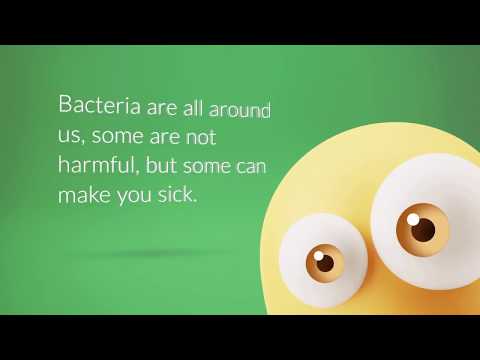What do you know about bacteria? Your first thought is likely something like “yuck” and that may be fair. Still, we should point out that there are good bacteria and bad bacteria. Bacteria are all around us, but not all bacteria are harmful. For example, you have a community of bacteria that live in and on your body, and they can support your health — these are good bacteria. There are also bacteria in some foods that are beneficial to health, such as those found in cultured foods like yogurt or sauerkraut. These bacteria can support digestion and your immune system.
Bad Little Buggers
Now let’s talk about the bad bacteria. These are the bacteria you should avoid because contact with them can make you sick. We’ve highlighted previously that bad bacteria can be encountered from contaminated foods, causing foodborne illness. Safe food-handling techniques like using clean utensils, cooking foods to their proper temperatures and storing foods properly can help reduce the risk of foodborne illness. We have a food system with regulated safety standards, but it’s still important to be diligent in handling food properly before eating it.
To give you a few more details on specific bacteria, check out our new video series. Let’s start with our good ol’ pal, Escherichia coli, or more commonly referred to as E. coli.
A Sometimes Nasty Guy, E. coli
All bacteria have different strains, and there are different characteristics for each type. Some differences include the ability to cause illness or the ability to adapt to specific environments. Bacteria that can cause illness are called pathogenic bacteria or pathogens.
There are six pathogenic E. coli strains. Pathogenic E. coli can cause diarrhea, urinary tract infections, respiratory illness and pneumonia, and other illnesses. While the majority of E. coli strains are not harmful, such as those strains naturally living in your intestines, there are some strains of E. coli that are linked to serious illness.
E. coli and Foodborne Illness
The most common E.coli strains associated with foodborne illness are the Shiga toxin-producing E. coli (STEC). This toxin is what makes you sick. STEC strains E. coli O157, E. coli O145 and E. coli O104 have made news headlines in past years as the primary foodborne illness culprits.
Infections with pathogenic E. coli are largely due to STEC. These infections occur if you digest even the smallest amount of human or animal feces. This can happen through the consumption of contaminated food, consumption of unpasteurized (raw) milk or raw milk products, consumption of water that has not been disinfected, contact with cattle or contact with the feces of infected people.
The CDC estimates that 265,000 STEC infections occur each year in the United States. But STEC can be avoided. Here are some key ways:
- Always wash your hands after using the restroom or handling animals
- Avoid raw milk, unpasteurized dairy products and unpasteurized juices
- Avoid swallowing water when swimming or playing in lakes, ponds, streams, swimming pools and backyard “kiddie” pools
- Prevent cross-contamination in food preparation areas by thoroughly washing hands, counters, cutting boards and utensils after they touch raw meat
- Cook meat and foods thoroughly (as directed on packaging)
We will be bringing you more food safety and foodborne illness bacteria facts in our new video series. Check back for more bacteria-busting facts!

